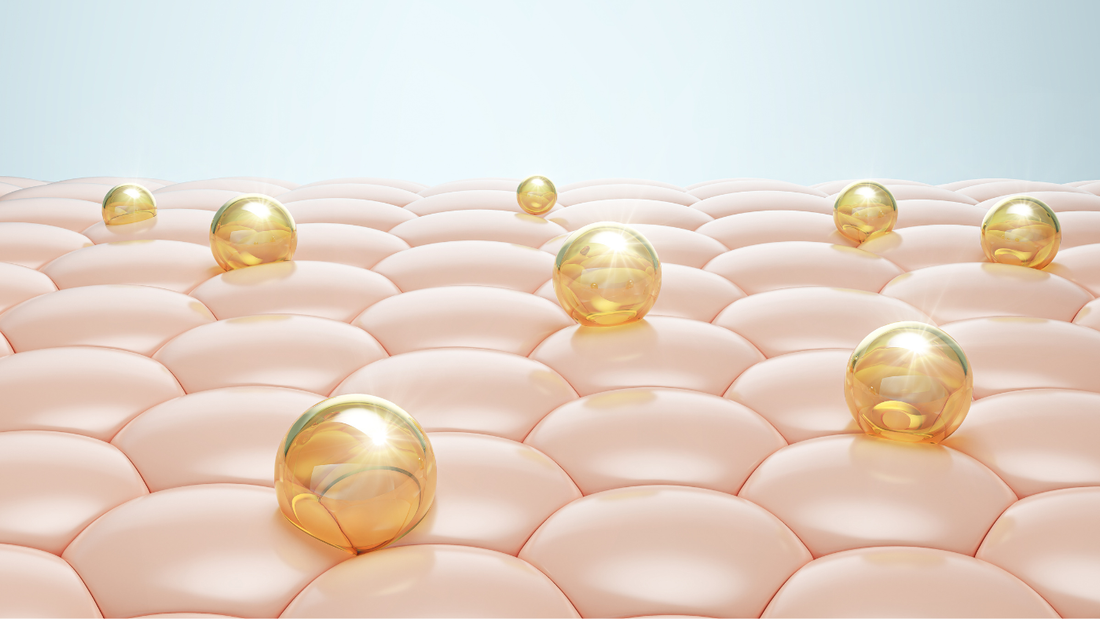Skin cells are in control.
If skin cells are the directing agent in the body, telling it how to form, collagen is the supporting manager. It helps skin cells adhere to each other, promoting healthy cells by providing them with the raw materials they need.
Our cells work by making copies of themselves over and over again. We shed around 600,000 skin cells per day, cells which are replaced and renewed by the body. Over time, these copies become weaker, losing their ability to function optimally. The science behind why this happens is complex (and still largely up for debate), but on a basic level, the structure of our cells changes over time. The function of the molecules inside the cells also alters over time, accumulating in generic damage.
The bright side.
While we can’t reverse cell damage completely, we can help our skin repair itself and hold its integrity for longer. For example, exposure to UV radiation prematurely ages skin, damaging the main proteins that make up the skin. Avoiding heavy UV radiation will keep skin looking younger and promote collagen and elastin (a protein that regulates skin elasticity).
Orally taking supplements to replenish natural collagen and elastin loss will also help keep the skin looking younger, avoiding the natural sag, moisture loss and accumulation of fine lines and wrinkles that come with prematurely aged skin.
However, this process relies on the digestive tract to disperse and feed collagen through the body, which isn’t the most efficient way to stimulate skin cells. For that, you need a more direct way of communicating with the cells — which is where Procell Microchanneling comes in.
Procell Microchanneling.
This process targets the body’s natural communication network in a much more localised way. Stimulating cells known as keratinocytes, in turn, send messages to deeper fibroblast cells, which contribute to the formation of connective tissues and secrete those all-important collagen proteins that maintain the network of skin cells. In this way, Procell Microchanneling helps both the outer layer of skin, increasing hydration levels and deeper connective tissue that maintains skin health throughout.
How Procell Microchanneling works.
By targeting select areas of the skin, fine needles are introduced, no more than 2mm deep, or at the epidermal layer of the skin. At this level, the body doesn’t respond strongly to an invasion, given the shallow depth and thinness of the microneedles. At the most, you’ll experience a slight tingling sensation, like pins and needles.
The microneedles, stimulating the cells that contribute to collagen production, trigger the skin’s natural repair response. By creating controlled ‘micro-injuries’ the body is more able to manage and repair areas of the skin which are damaged. This is why Procell Microchanneling is also used to repair scar tissue, stretch marks, and pockmarks and even stimulate receding hair follicles. Larger injuries, which have healed with noticeable marks, are ‘broken up’ into easier-to-manage ‘minor’ injuries, thus replacing the damaged tissue.
Introducing Procell growth serum.
The introduction of microneedles alone doesn’t account for all of the benefits of Procell Microchanneling. The needles introduce the growth serum using stem cells derived from human bone marrow. These are the ‘master builders’, which promote and ‘map out’ the healing process within your body. Introducing the building block material within the serum directly to the cells, stem cells act to help repair and rejuvenate the existing cells, turning into different cell types in order to pass on the instructions that damaged cells need to ‘figure out’ how to be healthy.
Healthy bone marrow cells are the best at doing this. Using the bone cells derived from healthy volunteers (including star athletes), the Procell serum includes a ‘blueprint’ of what healthy cells should look like. The introduction of the serum, therefore, increases both the hydration level at the epidermis and the collagen and elastin protein strands at the deeper dermal level.
The difference between microchanneling and microneedling.
Microchanneling uses a linear stamping technique, resulting in cleaner microchannels with a fixed depth. Essentially, microchanneling is much more accurate than microneedling, although both are minimally invasive.
Procell Microchanneling and you.
As a beauty technique, Procell Microchanneling can help you work on your ‘problem areas’, promoting healthy skin cells and reducing the appearance of fine lines, puffy skin under the eyes and scaring on specific areas of the body. The process is quick and suitable for most skin types, with very little chance of causing skin irritation.
If you want to know more about Procell Microchanneling or you want to delve deeper into the process, see us at The Beauty Parlour for a free consultation. Alternatively, you can book your Procell Microchanneling appointment here.

